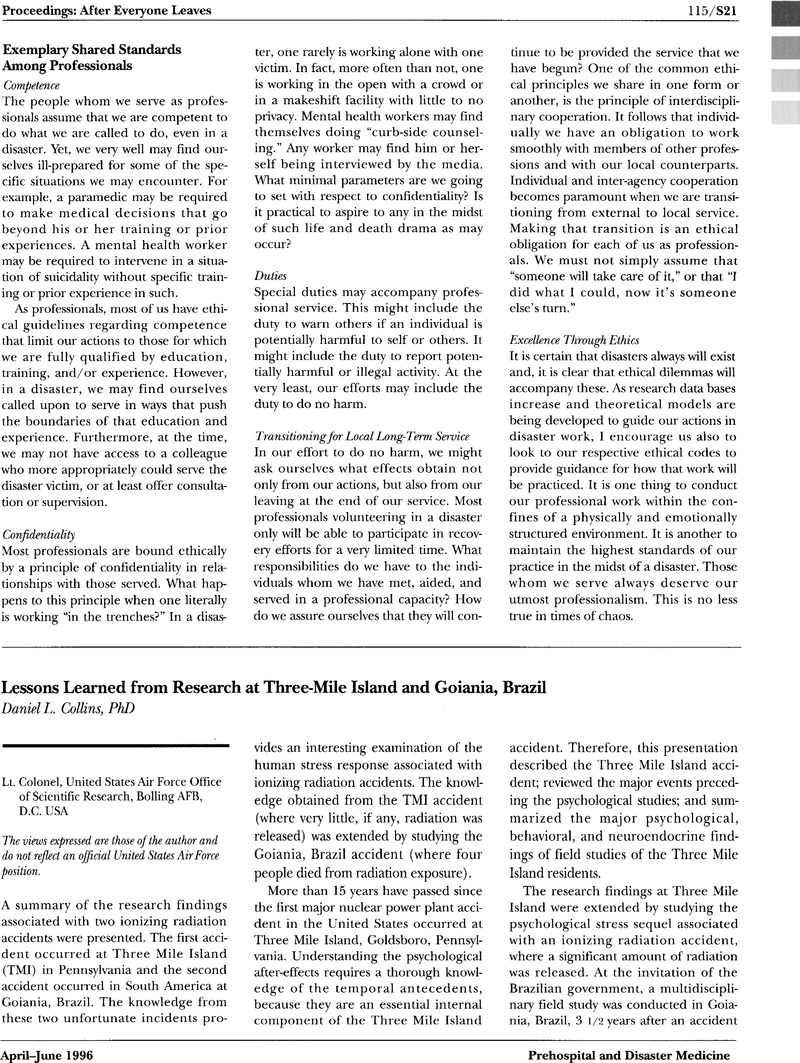Collins, DL: Stress at Three Mile Island: Altered perceptions, behaviors and neuroendocrine values, In:
The Medical Basis for Radiation Accident Preparedness III: Psychological Perspectives (ed)
Ricks, RC,
Berger, ME,
Elsevier Press,
New York 1991. pp
71–
80.
Google Scholar 